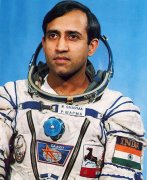The National Geographic Channel has launched a nationwide quest to discover India's most innovative and creative ideas in a program sponsored by Yamaha as part of its 'Shaping the Future' media campaign.
 The initiative seeks to identify potential and relevant innovations that could lead to technological or scientific breakthroughs or those that help improve quality of life. The innovations will be evaluated across four categories: Environment Edge, Technology Edge, Human Edge and Re-Engineering Edge.
The initiative seeks to identify potential and relevant innovations that could lead to technological or scientific breakthroughs or those that help improve quality of life. The innovations will be evaluated across four categories: Environment Edge, Technology Edge, Human Edge and Re-Engineering Edge.
The nationwide campaign seeks to identify the most promising inventions and innovations across India where it is looking for innovations that can "make a difference to our life, our world and the future."
The second edition of the Global Innovation Index in 2008 ranked India 41 in the Top 130 list of the World's Most Innovative Countries.
Individuals from all corners of the country will get an opportunity to showcase their innovations that they believe has the potential to make a difference to society and to India. To enable this, the National Geographic Channel has collaborated with some of India's leading educational institutions including the FITT, IIT Delhi (Foundation for Information & Technology Transfer of Indian Institute of Technology), SINE, IIT Bombay (Society for Innovation and Entrepreneurship of Indian Institute of Technology), NSRCEL IIM, Bangalore (Nadathur S Raghavan Centre for Entrepreneurial Learning at the Indian Institute of Management) and TePP, DSIR (Technopreneur Promotion Programme at the Department of Scientific and Industrial Research.)
Rajesh Sheshadri, Senior Vice President, Content and Communication, National Geographic Channel - India, said, "We believe that the innovation potential of India is immense and that much of it remains untapped and hidden. The real endeavor of the program is to unearth this and to also provide a relevant platform that showcases India as an innovation powerhouse. We believe this will further help to create an enabling environment that further stimulates innovative thinking that is focused on important social and technological issues to help make a difference to society and environment,"
According to National Geographic the selection process of this campaign will span across six phases. The online registration began 10th August, where participants have been encouraged to register themselves at the www.msnindia.com/ngc web site. The shortlisted projects will be judged by a panel of eminent academicians, technicians and industrialists. All the projects will be awarded across four categories namely Environment, Technology, Human and Re-Engineering. A jury will choose four teams spanning all categories after a stringent set of evaluations and presentations.
The program will be extensively promoted across media - on-air, on-ground, radio and on-line. The National geographic Channel has an exclusive tie-up with the leading online portal, MSN.
For further details visit this website http://specials.msn.co.in/sp09/shapingyourfuture/
or contact: priyam.chaturvedi@bm.com or swatee.dobriyal@bm.com

